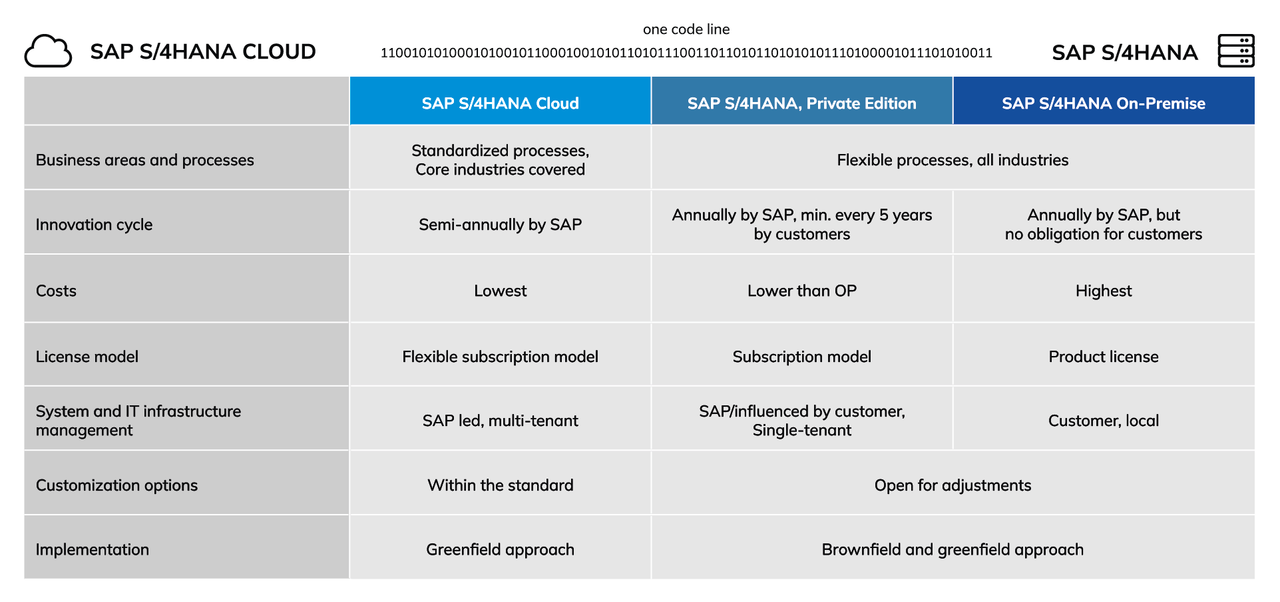Range of functions SAP S/4HANA public, private cloud and on-premise
The S/4HANA Public Cloud offers a broad selection of established best practice processes and represents a fully comprehensive ERP system for companies from all industries. However, individual customisation options are only possible to a limited extent and are less extensive than with the other options. The following options are available for expansion:
The SAP Business Technology Platform (as a side-by-side extension)
The in-app extension by key users
On-stack development in the S/4HANA Cloud ABAP environment
The public cloud variant is therefore an immediately executable standard ERP solution that should be of particular interest to small and medium-sized companies.
The Private Cloud and On-Premise variants offer the full range of S/4HANA functions and a wider range of customisation options. For example, code modifications are also possible here (although not recommended). Switching from the existing SAP ECC to S/4HANA using the brownfield approach is also only possible for these options.








